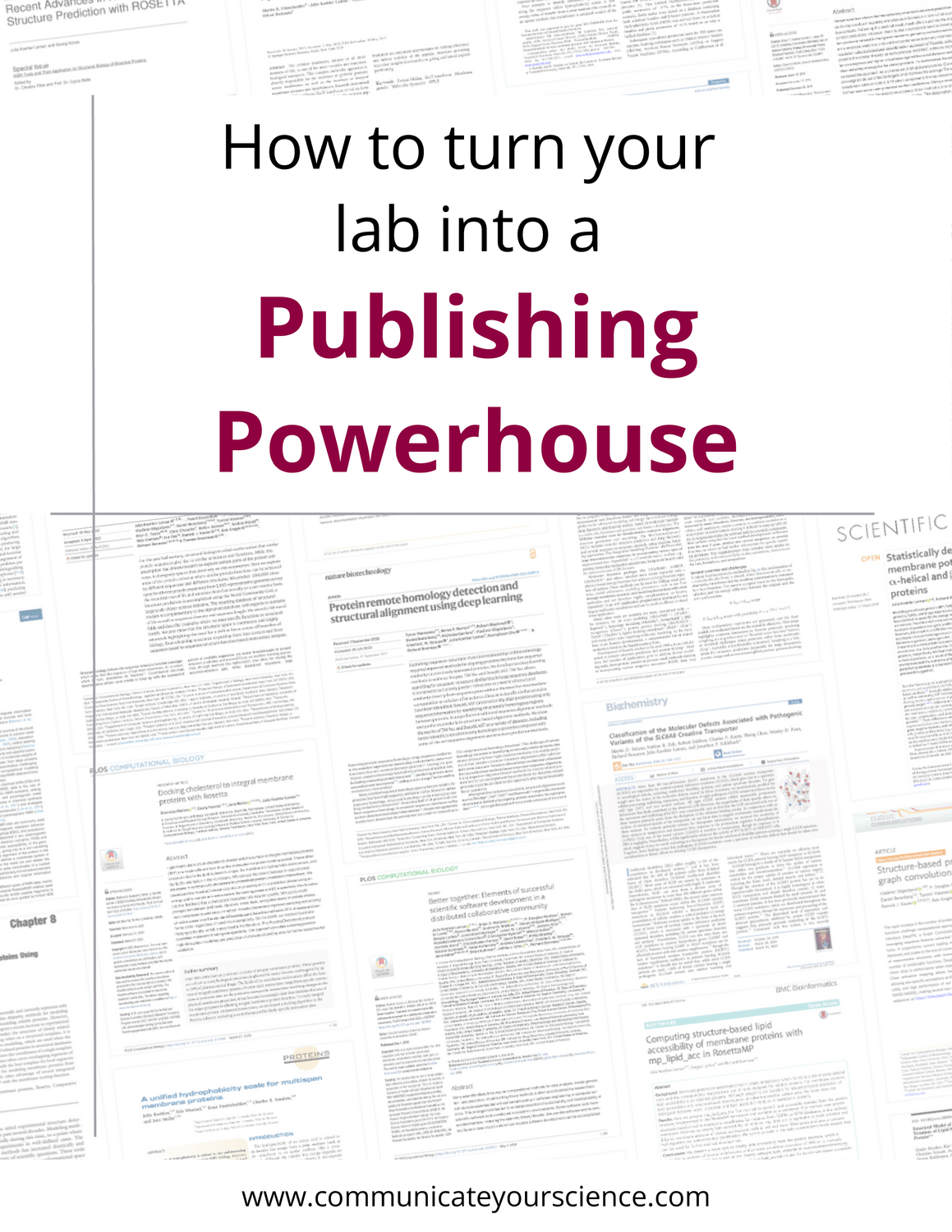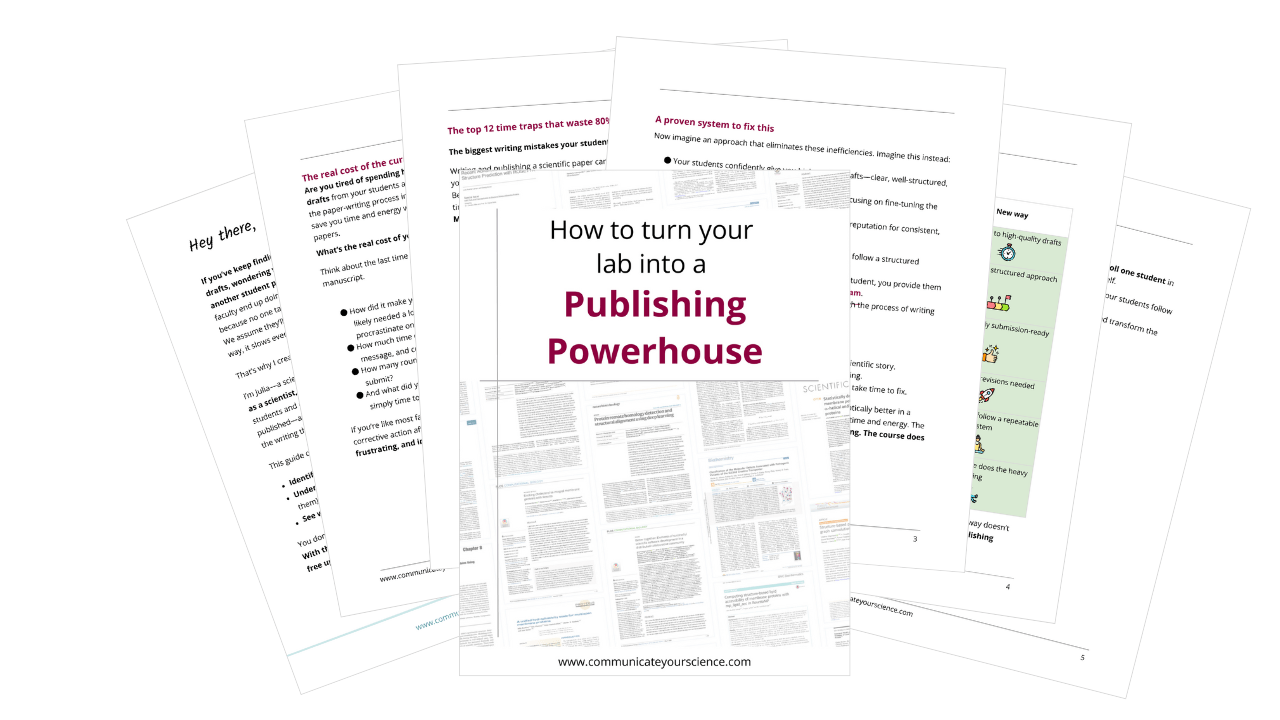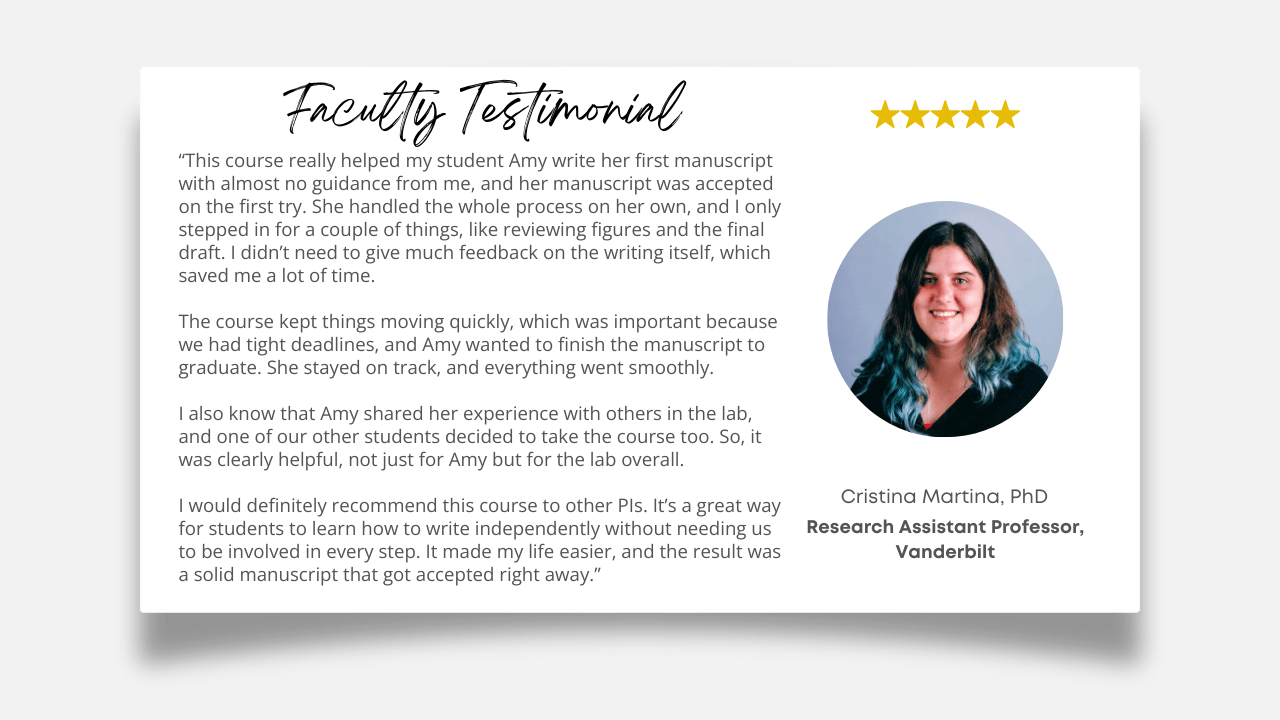For faculty wanting to publish more and edit less
How to turn your lab into a Publishing Powerhouse

Train your students to write better drafts faster—without you doing all the work
If you’re spending too much time rewriting student papers, you’re not alone. Most trainees aren’t taught how to write scientific papers—and that gap creates slow drafts, endless revisions, and a much heavier lift for you.
What you’ll get:
12 common time-wasting traps students fall into when writing papers
A clear vision for what the new writing process could look like in your lab
A mindset shift: you don’t have to carry the writing burden yourself
An efficient way to save time, reduce stress, and publish more
Tired of chaotic drafts and endless revisions?
You’ve got brilliant students doing great science—but when that first draft lands on your desk, it’s a mess. The structure is off, the arguments are unclear, and suddenly you’re the one doing the heavy lifting. Again.
You want to help, but with your own deadlines, grants, and inbox, mentoring turns into rewriting the whole paper. It’s frustrating. It’s draining. And it’s not sustainable.
Let’s change that.
This guide breaks down the writing traps students fall into—patterns that lead to slow progress and papers stuck in endless revisions. More importantly, it shows what’s possible when your trainees avoid those traps—so you get high-quality drafts, fewer revision cycles, and more time (and headspace) for your own work.
Less rewriting. Less stress. More momentum.
You’re welcome. 😉


Hey there!

I’m Julia Koehler Leman, a trained scientist and software developer with nearly two decades of experience in academia. I’ve published over 30 papers—including in Nature Methods and Nature Communications—mentored more than 30 trainees, and developed a system that help trainees write and publish faster, with fewer revision cycles and a lot less stress.
I created CYS Consulting because I’ve experienced first-hand how much time faculty lose to editing and rewriting their students' manuscript drafts. Most trainees aren’t taught how to write scientifically—and faculty end up picking up the slack. My goal is to change that.
Through my programs and resources, I help scientists:
Avoid common writing mistakes that waste time
Submit better drafts a lot faster
Develop more independent, confident trainees
Save hours of editing time—without sacrificing quality
With a rejection rate of around 3%, I know what it takes to get papers accepted—and I love helping others do the same.
Let’s make scientific communication easier—for you, and for your lab.